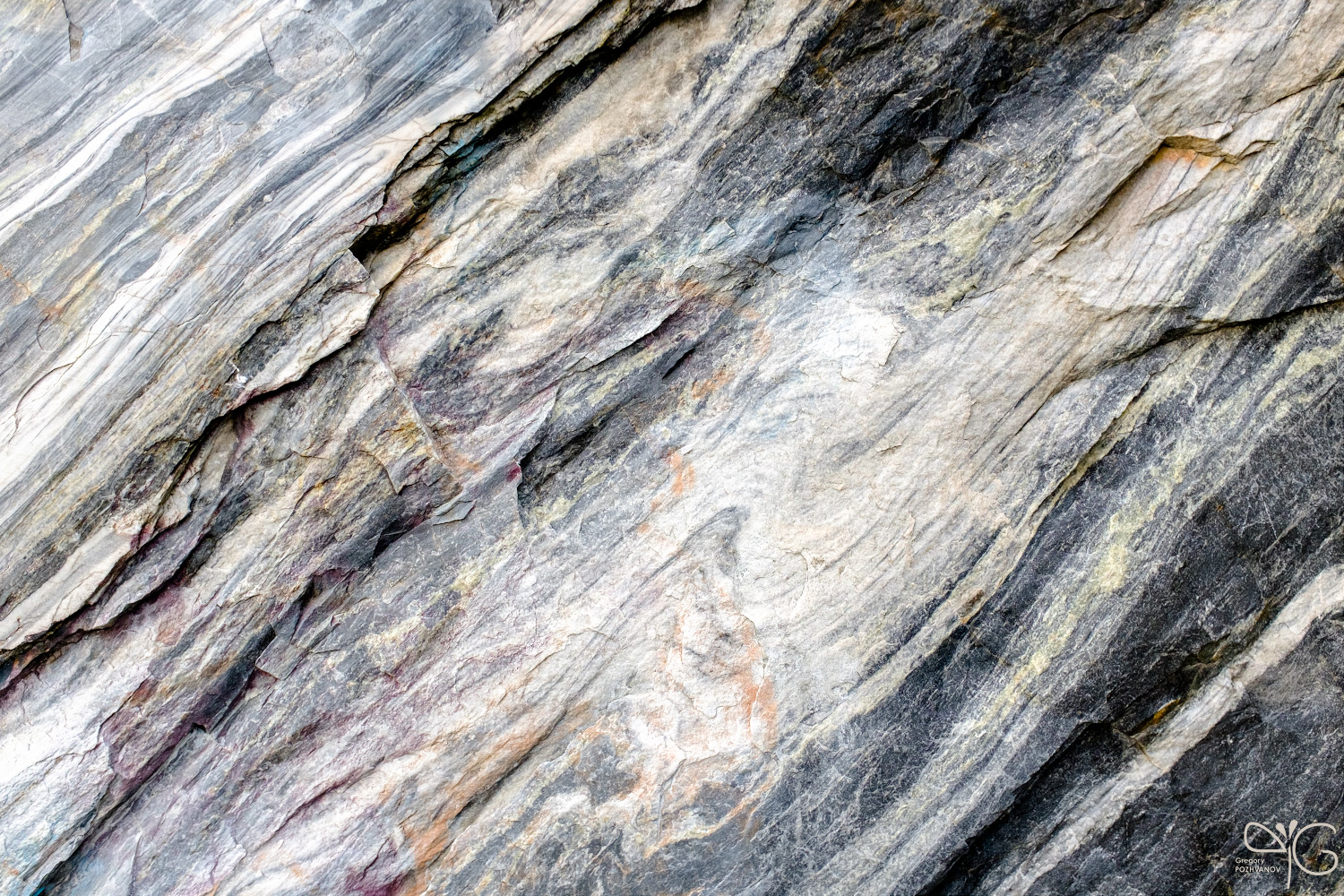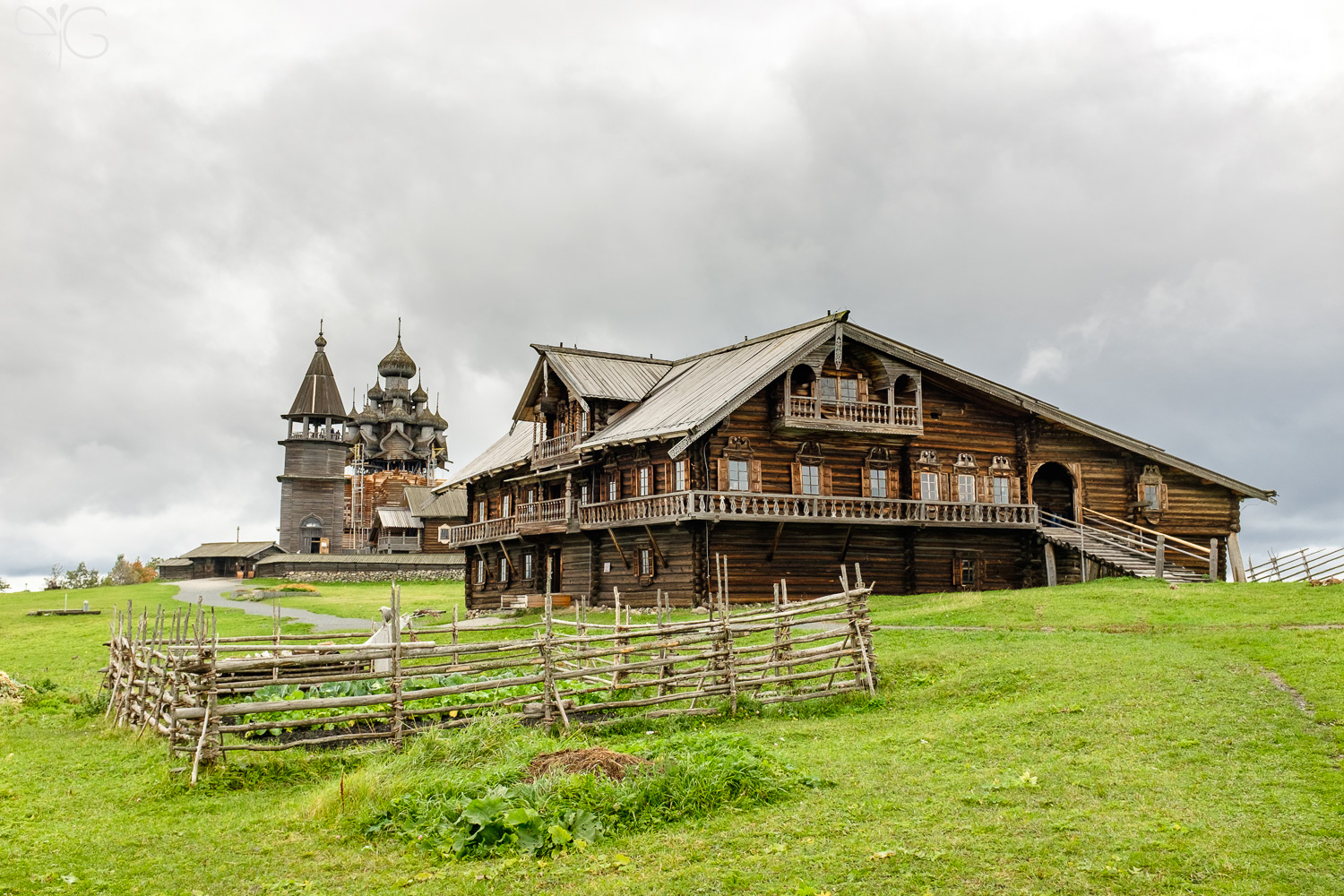After a few steps on the land of Kizhi island I felt calm and quiet. Wooden buildings around adjust the tourists′ mind in a natural way. This feeling of peace and extraordinarity of the place comes even before you approach the island while the boat glides over the waters of Onega skerries. Open waters of Onega lake were left just after the lighthouse on Garnitsky isle, and then the boat goes through the skerries. “Meteor” moves around another one cape, and then another one village shows, then a leading beacon appears, followed by a nice yellow birch and dark spruce trees, and then again a village with a pier… Then finally Church of the Transfiguration shows off. The church looks like a spaceship at a launch pad, floating in the air. It turns out that the church is under renovation, and some timber layers are excised in a top-down way for a treatment while the top of the church is suspended on jacks. If not this, nothing suggests you that you are actually in the 21th century. Nothing break the silence but the bells which ring from time to time in Chapel of Michael the Archangel at the southern cape of Kizhi island. You won′t notice any power lines suspended on ugly masts. Here are only forests and waters till the horizon, and various clouds are above. You see old wooden buildings from 18th and 19th centuries, and Church of the Resurrection of Lazarus among them suggests even greater age. And let the traffic beacon be next to the Church! It tells us that this place is habitated, ships move by, and the locals continue their fishing. Surprisingly, my iPhone shows full 3G signal. And this is a dream, a dream for the Russian North – the harmony between the tough nature, civilisation and the priceless heritage from the past.

Marble textures in Ruskeala
Photographers and other tourists are attracted by this half-flooded marble quarry in Ruskeala settlement. However, it′s not as easy to get here as to the north-western part of Ladoga skerries. In fact, Ruskeala is even more to the north than the city of Petrozavodsk.
I would not say I feel very familiar with what Ruskeala quarries may offer for landscape photography. Anyway it′s quite hard to get known to the place in just one day. But for sure I am impressed with various marble textures, patterns and surface types. These things may be photographed from both the boat and land.
There are two two grottos on the Large marble quarry lake, one of which allows you to stand full-length in the boat, while in the other one you take care not to crash your head against the rock ceiling. Locals use to make wedding photos in the large grotto from a motor-powered pontoon. The smaller grotto is much less visited. I was happy to see a small duck there, which slowly moved to the open water and made a nice spot in the image.
There is a path along the lake shoreline which leads you to a vertical mine and a horizontal gallery. Huge depression with an underwater lake is located nearby. Then the path leads to Italian quarry. You may find some artifacts here, like large rocks of drilled and knocked marble, old rusty railway switch, tub wheels, etc. so there is something to explain about for your children.
Smooth walls of Italian quarry demonstrate various textures of marble rock – stripes, twirls, and threads.
